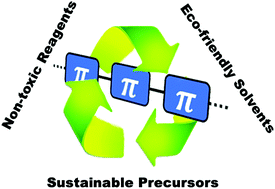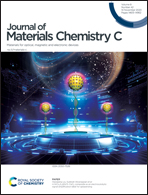Eco-friendly semiconducting polymers: from greener synthesis to greener processability
Abstract
Organic π-conjugated polymers are an important class of semiconducting materials with favourable optoelectronic and thermomechanical properties, making them great candidates for the fabrication of next generation electronics. These materials can be manufactured at large-scale through solution deposition techniques and many parameters affecting their processability can be easily modulated through synthetic design. However, current synthesis and processing approaches often involve employing toxic precursors, additives and/or solvents, significantly impacting the environmental sustainability of these promising materials. This review presents emerging strategies for materials scientists to design, develop and process semiconducting polymers in a more sustainable and eco-friendly manner. Emphasis will be given throughout this review to materials that are sourced and prepared from sustainable eco-friendly precursors through novel polymerization approaches. Additionally, emerging chemical design strategies for enhancing the solubility of these materials in environmentally benign solvents will also be highlighted. These various methodologies for greener materials and processing will ultimately provide greater cogency towards the development of sustainable next generation electronics.



 Please wait while we load your content...
Please wait while we load your content...